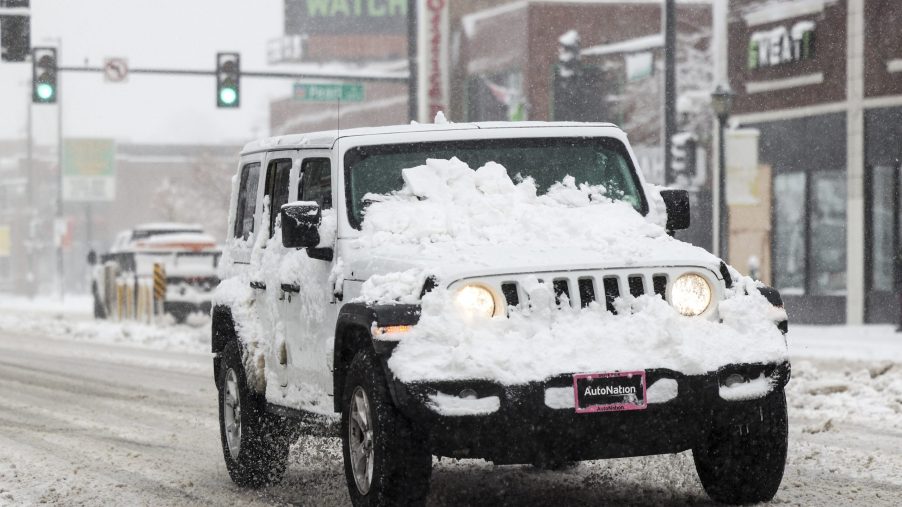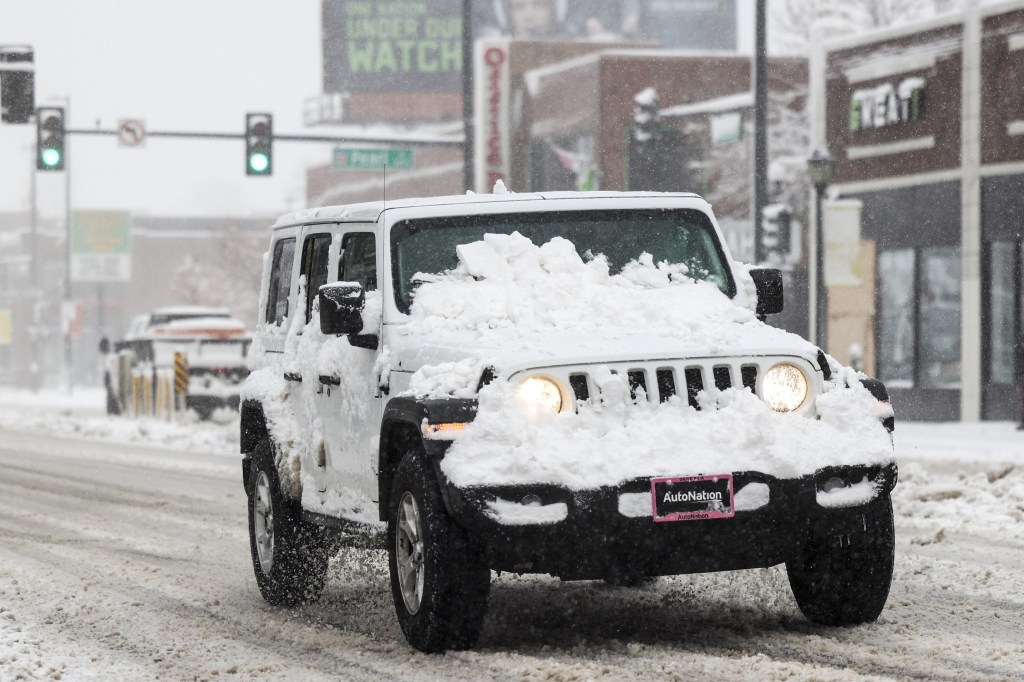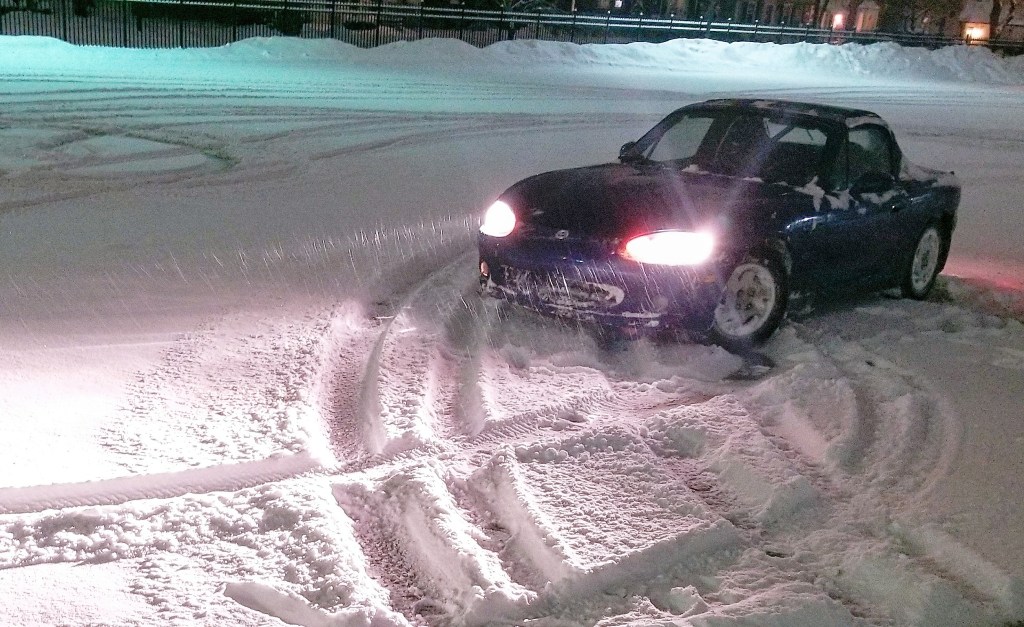
You Don’t Always Need AWD or 4WD for Driving in the Snow
It’s just about time for communities to break out the snowplows. And that means a significant portion of the US must deal with driving in the snow again. Many do so by turning to cars or SUVs with AWD, or perhaps 4WD pickup trucks. However, cars got around just fine in the snow before either became popular or standard. But if AWD and 4WD aren’t necessary, what is?
AWD and 4WD are better in the snow, but they’re by no means foolproof

It’s worth noting that driving in the snow with an AWD or 4WD vehicle is easier than driving a FWD or RWD one. However, even a Subaru WRX can crash on a snow- and ice-covered road. And for every truck that’s pushed a plow or towed a load through the snow, there’s at least one that’s struggling for grip.
If this seems like an AWD and 4WD takedown, it’s not. It’s just that many drivers misunderstand what these systems do. Or rather, they get overconfident in their vehicle’s capabilities, which causes them to overstep their limits in disastrous ways. To quote Car and Driver, “vehicles equipped with [AWD] or [4WD] can lull you into a false sense of security on slick roads.”
So, what are the benefits of AWD and 4WD when it comes to driving in the snow? For one, better off-the-line acceleration, because more driven wheels = more power to the ground. Modern AWD systems also let the car send power in different proportions to different wheels based on available traction. And 4WD, with its continuously-driven wheels and low-range modes, is helpful for setting off through deep snow, Car and Driver notes.
However, while both systems help you go, they don’t help you stop or turn. And taking advantage of available traction doesn’t help if there’s no traction at all. All too often, people with AWD and 4WD vehicles think they’re invincible and end up driving far too fast in the snow. Then, when they start spinning or have to brake suddenly, they can’t control their cars.
In short, AWD and 4WD are helpful, but only when used correctly, and only up to a point.
If you’re driving in the snow, putting winter tires on is “the best thing you can do,” Car and Driver says
Whether your car has AWD, 4WD, FWD, or RWD, there’s one thing that absolutely boosts its ability to drive safely through the snow. And that’s fitting it with winter tires.
I know what you’re thinking: you have all-season tires, you’ll be fine in the winter. Well, not necessarily. Yes, some all-season tires can adequately deal with snow and ice. But winter tires, aka snow tires, are formulated and designed specifically for chilly weather and snow, slushy roads. And they out-perform all-season tires in these conditions.
In Consumer Reports‘ hands, an AWD Honda CR-V needed 310 feet to stop from 60 mph in the snow on winter tires. But it needed 668 feet to stop when it was rolling on all-seasons. Furthermore, a FWD Toyota Camry on winter tires stopped in the same distance as the winter-shod AWD CR-V.

Remember, AWD and 4WD maximize your car’s ability to use available traction. They can’t magically make more traction appear. But winter tires’ treads push snow, ice, and water away from the road surface more effectively than all-seasons’ treads. And the winter-specific compounds grip better at low temperatures. Both things together create more traction.
Also, Consumer Reports’ Camry did well not just because of its tires, but because of its layout, too. Front-engine FWD cars put most of their weight over their drive wheels. That helps power reach the ground more effectively, which means more traction and better braking. It’s as true on a rally stage as on the road.
So, even if your car has AWD, consider winter tires required materials for driving in the snow.
What else should you do before driving in the snow?
However, even with winter tires, driving in the snow and ice can be dangerous. If you look out the window and don’t feel confident in your driving skills, stay home. But if you do go out, there are several things you can do to stay safe.
Firstly, if your car has stability and/or traction control, keep them on. Turn your cruise control off, though. Also, gentle acceleration and braking are key, as is going slow and keeping additional distance between yourself and other cars. That way, you have plenty of time to react if something happens. Making sure all your movements and control inputs are smooth helps, too. And use your turn signals.
If you do hit a patch of black ice or start spinning for another reason, don’t panic. Get off the gas smoothly and gently, but don’t hit the brakes unless it’s necessary. If your front wheels are skidding, turn in the direction you want to go. But if the rear wheels are skidding, steering in the direction they’re going. And keep your eyes up and look where you want to go.
Besides winter tires, tire chains and studs can also help increase traction when driving in the snow. However, not every locale allows studded tires or tire chains, so check before you install them. Also, all tires, winter and otherwise, need adequate tread depth to function properly. So, before you head out, check your treads. And for better traction, lower your air pressure slightly.
Finally, practice. Find an empty parking lot and carefully accelerate, steer, and brake until you’re used to snowy conditions. Just make sure you have permission from the owner.
No AWD or 4WD system will save you from every winter drive or poor judgment. But with the right approach and winter tires, driving in the snow can have you laughing all the way.
Follow more updates from MotorBiscuit on our Facebook page.


